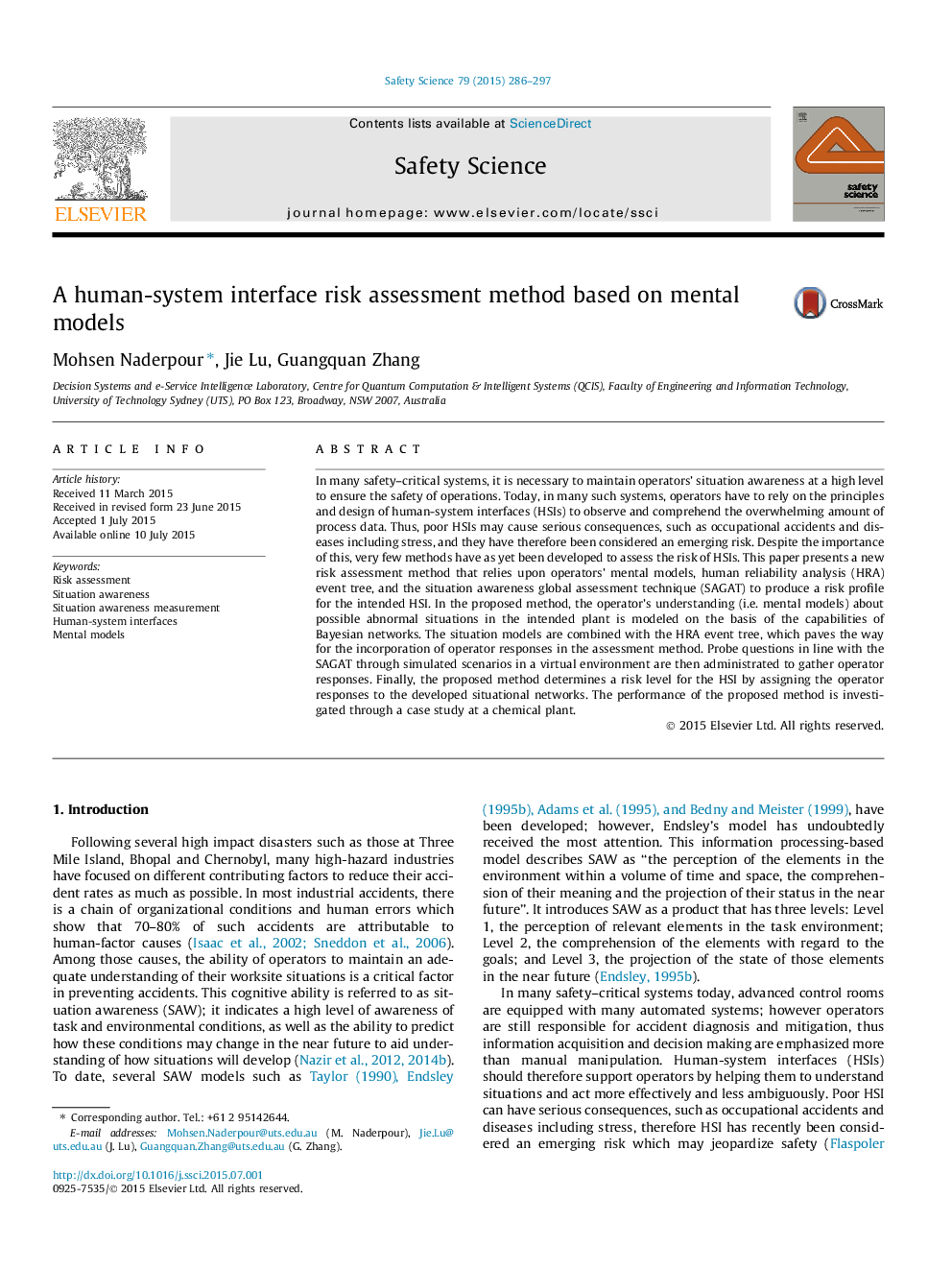| Article ID | Journal | Published Year | Pages | File Type |
|---|---|---|---|---|
| 6975699 | Safety Science | 2015 | 12 Pages |
Abstract
In many safety-critical systems, it is necessary to maintain operators' situation awareness at a high level to ensure the safety of operations. Today, in many such systems, operators have to rely on the principles and design of human-system interfaces (HSIs) to observe and comprehend the overwhelming amount of process data. Thus, poor HSIs may cause serious consequences, such as occupational accidents and diseases including stress, and they have therefore been considered an emerging risk. Despite the importance of this, very few methods have as yet been developed to assess the risk of HSIs. This paper presents a new risk assessment method that relies upon operators' mental models, human reliability analysis (HRA) event tree, and the situation awareness global assessment technique (SAGAT) to produce a risk profile for the intended HSI. In the proposed method, the operator's understanding (i.e. mental models) about possible abnormal situations in the intended plant is modeled on the basis of the capabilities of Bayesian networks. The situation models are combined with the HRA event tree, which paves the way for the incorporation of operator responses in the assessment method. Probe questions in line with the SAGAT through simulated scenarios in a virtual environment are then administrated to gather operator responses. Finally, the proposed method determines a risk level for the HSI by assigning the operator responses to the developed situational networks. The performance of the proposed method is investigated through a case study at a chemical plant.
Related Topics
Physical Sciences and Engineering
Chemical Engineering
Chemical Health and Safety
Authors
Mohsen Naderpour, Jie Lu, Guangquan Zhang,
